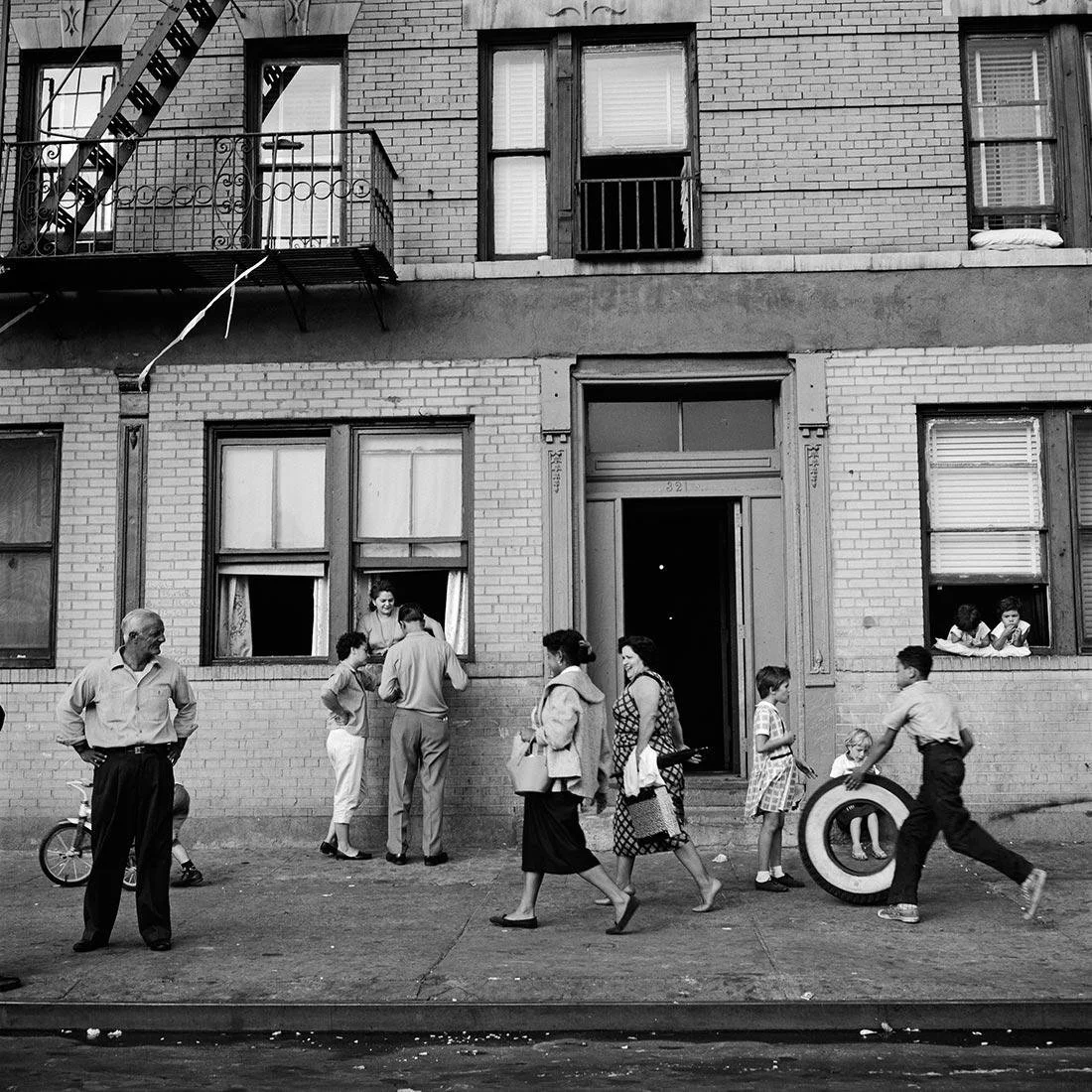Selected Courses Taught as Instructor of Record
City Living, Harvard University, Harvard Writing Program (Fall 2022, Spring 2023)
Where to live is the most important decision of your life, according to urban planner and theorist Richard Florida. Cities are where innovation meets inequality, the old is pitted against the new, where cultural richness and diversity confront gentrification and displacement. Starting with the photography of Vivian Maier, a street photographer whose work caused a sensation after her death, we will ask how the design of neighborhoods and streets shapes the social life that goes on there. Cities are places of maximum possible anonymity and maximum possible community: we will ask how urban theorists have explained that paradox. In our second unit, we will explore projects for the utopian City of Tomorrow and grassroots movements to retake control over city streets: we will read classic manifestos and analyses from Le Corbusier, Jane Jacobs, and Mike Davis, urban theorists with very different ideas of how cities should look and work. In the final unit of this course, students will choose a work of urban art (a film, a TV series, a novel, or poetry collection) and, placing it into conversation with other research, make an argument about that work’s conception of city living. Over the course of the semester, we will consider questions such as: Is city living a necessary evil or an aspirational lifestyle? Are cities sustainable in the face of climate change and remote work? How do the boundaries of neighborhoods and school districts shape economic and racial disparities? Should cities follow an orderly plan or develop organically? How should cities remember their pasts or imagine their futures?
Double Portraits: Reading Writers Side-by-Side from the Romantics to the Present, Harvard University, English Department Junior Tutorial Program (Spring 2022)
“No poet, no artist of any art, has his complete meaning alone,” T.S. Eliot wrote in 1919. This junior tutorial offers a gallery of double portraits: major poets whose individual achievements are clarified when twined with an important contemporary. Each week, we’ll read two poets whose work is more intelligible side-by-side. Our pairs of (nineteenth and twentieth century) poets relate to each other as collaborators, editors, rivals, lovers, correspondents, guiding lights, or cautionary examples. We’ll map these relationships of influence—both welcome and unwelcome—in the poems themselves as well as essays, letters, and archival materials.
We’ll add a frame to each week’s double-portrait by introducing a different critical method each week. While our attention will center on our chosen texts as aesthetic objects, these ways of reading and thinking about poems will give occasion and rigor to our questions about literary interpretation and poetics. What is the relationship between social networks and individual inspiration? Can poets choose their literary ancestors or decedents? How is literary form transformed through imitation and exchange? Our exploration of these questions will draw on the rich resources of Harvard’s libraries and museums.
“Go, Little Book”: First Books of Major Poets, Harvard University,
English Department Junior Tutorial Program (Fall 2017, Spring 2019)
What was it like to read the major poets of the 20th century as they first appeared? Contemporary readers almost always encounter these writers sprinkled in anthologies or gathered magisterially in a Collected, Selected, or even Complete edition. In this tutorial we will read them between their first covers, restoring the book as a coherent aesthetic unit. Each week we will explore a first book published between 1917 and 1960 along with essays, letters, and archival materials that illuminate its form and context.
Along the way, this tutorial provides an atlas of ways of writing about poetry. Each week pairs a book of poems with a different methodical approach. While never losing sight of the poems as compelling aesthetic objects, we will explore questions of literary sociology (who decides which poetry books are published and read?) and theory (just who is the “I” in a lyric?), technique (how do poets revise?) and tendency (what does it mean to belong to a movement or a tradition?). In these investigations, we will draw upon the archival riches that have accrued from Harvard’s deep connection to twentieth century poetry.
Not Who You Think I Am: Impostors, Frauds, and Confidence Artists, Harvard University,
Division of Continuing Education (Summer 2023, Summer 2022)
Who becomes someone else? The imposter, someone who puts on a new identity like a new set of clothes, is a trickster figure. Imposters can be compelling, even heroic, like F. Scott Fitzgerald's Great Gatsby (also known as James Gatz). More often, they glow with a sinister charm like Patricia Highsmith's conman, Tom Ripley. In the face of discrimination, turning imposter can also feel like a way out or a way up. This course examines the enduring hold that the impostor has on the American imagination. In our exploration of imposters, we draw on Hollywood films (like Catch Me If You Can), literary fiction from Fitzgerald and Henry James, journalism from The New Yorker and “This American Life,” as well as essential works of psychology and history. We ask big questions where is the line between creativity and deception? and small ones how do novelists and filmmakers use point of view? in our quest to understand what makes imposters tick. We also investigate journalistic and forensic methods for discovering fraud. Finally, we ask how imposters (and their dupes) react to being caught.
Selected Courses Taught as Teaching Fellow
“Keats Isn’t Dead”: How We Live Romanticism
Ancestry: Where Do We Come From And Why Do We Care?
Foundations of Lyric Poetry
The American Novel: Dreiser to the Present
English Composition II
Four Poets, English and Irish: Shakespeare, Marvell, Keats, Heaney
Poems, Poets, Poetry
Modern British Writers



